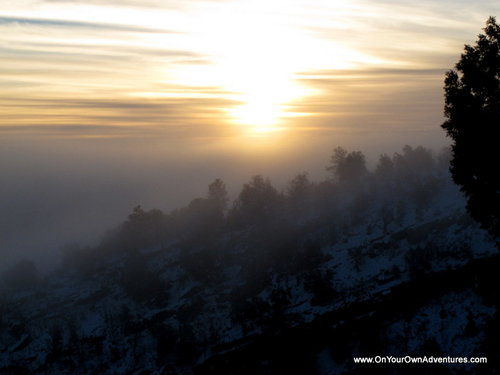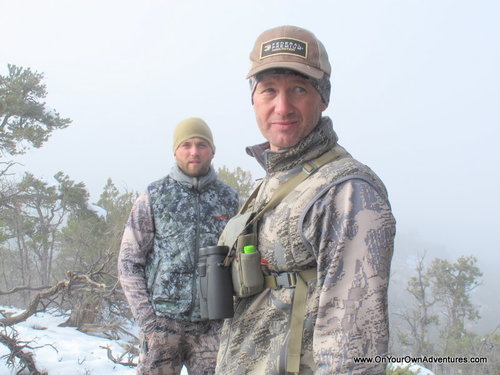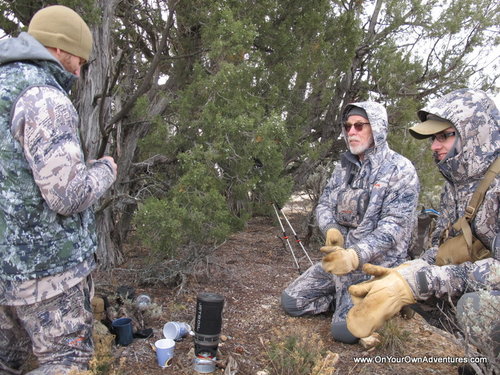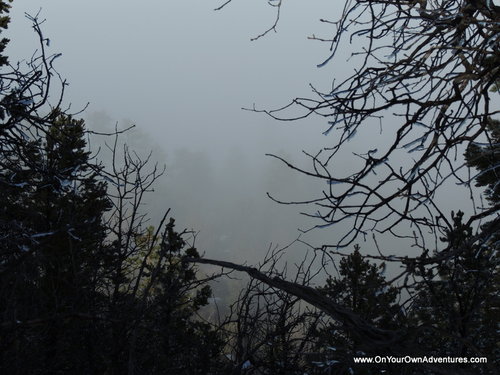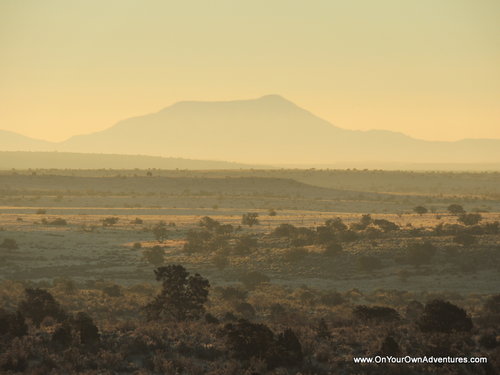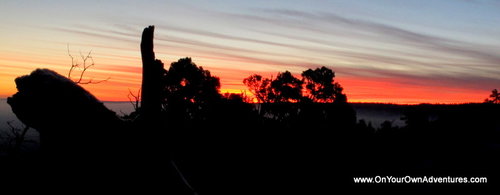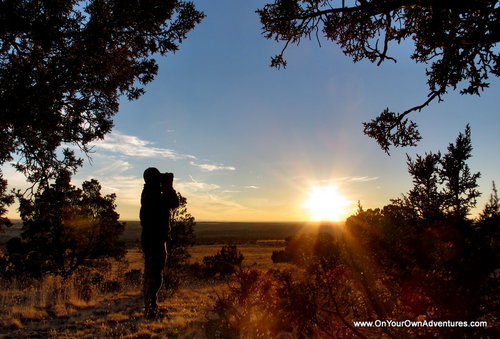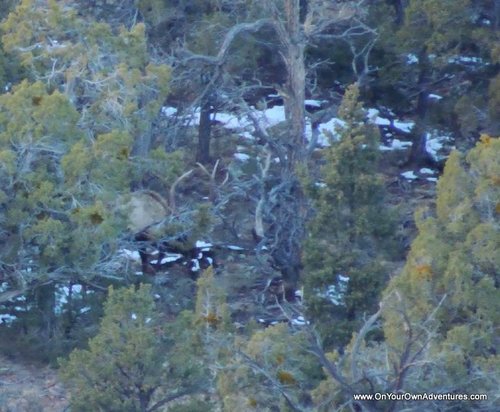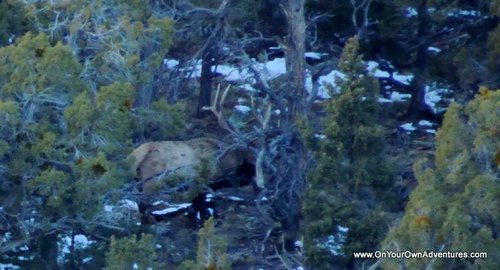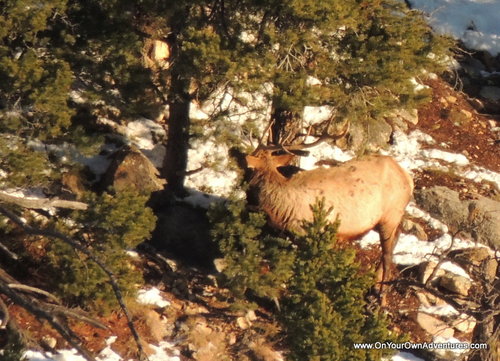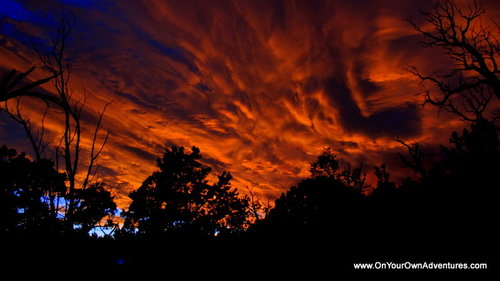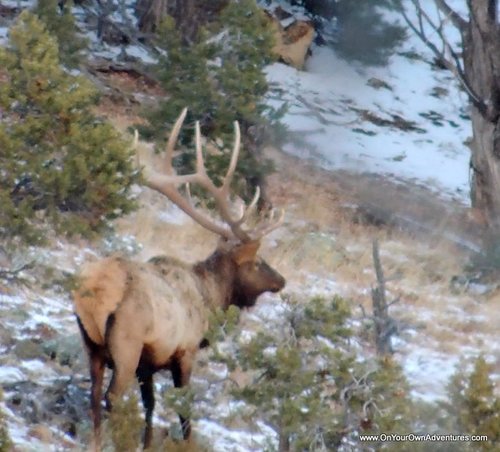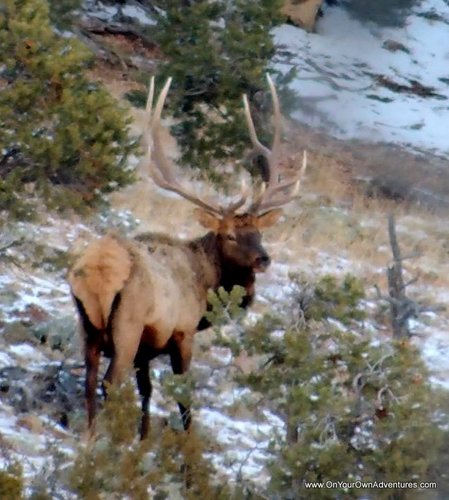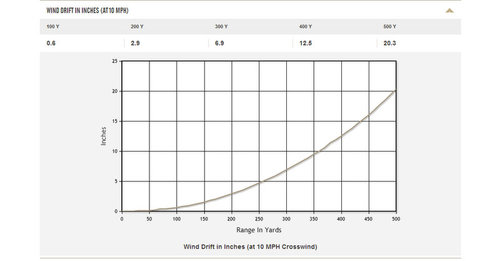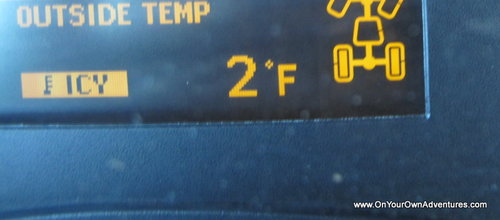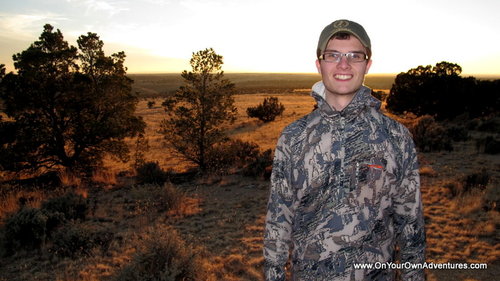Now that I have returned and another season is in the can, I better complete the write up on this late season Arizona elk hunt. Might take a while, so better get started now.
I received a pass from Mrs. Fin to leave the Sunday before season started, allowing me to get there mid-day on Monday and start the scouting operation for the season opener that would be on Friday. Being allowed to miss Thanksgiving requires some serious maneuvering on my part. In this case, the allowance was granted due to the fact that my guest hunter on this trip would be my son, Matthew. When you have an only child, your wife will grant you most any accommodation if it is to the benefit of said child.
It is always a long trip to AZ and NM. I’m getting too old for these road trips. Someday, I need to find a driver to haul my gear down. The worst part is always passing through the 80 miles of chaos along the Wasatch Front of Utah, or as my one LDS friend calls it, “The Mormon 500.” If that doesn’t wear you out, hardly anything will.
I got to northern AZ a little after lunch on Monday and was out scouting that afternoon. Wasn’t really looking for much, rather just trying to learn the roads and the lay of the land. Maps were spread all across the seat of the truck, with potential spots marked.
Lucky for me, the snow had ended the day before. The higher elevations of the unit had 8” of fresh powder, heavily tracked up by the time I arrived. The lower elevations, down off the rims, had no snow.
The next three days were spent scouting. Not sure I have ever found so many nice bulls while scouting. Nothing huge, but nice bulls that would look really good on camera. And unusual for a late Arizona hunt, only a few of them were broken, with most of them intact.
By the time Matthew and Brad (camera guy) rolled in from Phoenix, I was bouncing around and chattering about the great luck we were going to have. I showed them pictures and video of bulls and marks on the maps where I had seen bulls every morning and evening. All was set, especially if we could find “Grande Jefe” (Uncle Larry’s term for any over-sized buck or bull we are chasing) come the next morning.
Lots of pics, but this bull was the one that had me most excited for opening day.
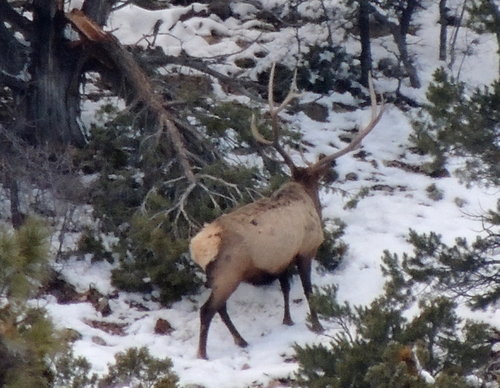
Not a broken tine anywhere, the exception for late hunts in AZ.
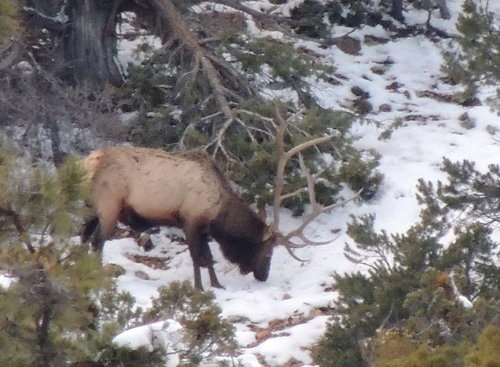
I received a pass from Mrs. Fin to leave the Sunday before season started, allowing me to get there mid-day on Monday and start the scouting operation for the season opener that would be on Friday. Being allowed to miss Thanksgiving requires some serious maneuvering on my part. In this case, the allowance was granted due to the fact that my guest hunter on this trip would be my son, Matthew. When you have an only child, your wife will grant you most any accommodation if it is to the benefit of said child.
It is always a long trip to AZ and NM. I’m getting too old for these road trips. Someday, I need to find a driver to haul my gear down. The worst part is always passing through the 80 miles of chaos along the Wasatch Front of Utah, or as my one LDS friend calls it, “The Mormon 500.” If that doesn’t wear you out, hardly anything will.
I got to northern AZ a little after lunch on Monday and was out scouting that afternoon. Wasn’t really looking for much, rather just trying to learn the roads and the lay of the land. Maps were spread all across the seat of the truck, with potential spots marked.
Lucky for me, the snow had ended the day before. The higher elevations of the unit had 8” of fresh powder, heavily tracked up by the time I arrived. The lower elevations, down off the rims, had no snow.
The next three days were spent scouting. Not sure I have ever found so many nice bulls while scouting. Nothing huge, but nice bulls that would look really good on camera. And unusual for a late Arizona hunt, only a few of them were broken, with most of them intact.
By the time Matthew and Brad (camera guy) rolled in from Phoenix, I was bouncing around and chattering about the great luck we were going to have. I showed them pictures and video of bulls and marks on the maps where I had seen bulls every morning and evening. All was set, especially if we could find “Grande Jefe” (Uncle Larry’s term for any over-sized buck or bull we are chasing) come the next morning.
Lots of pics, but this bull was the one that had me most excited for opening day.

Not a broken tine anywhere, the exception for late hunts in AZ.





